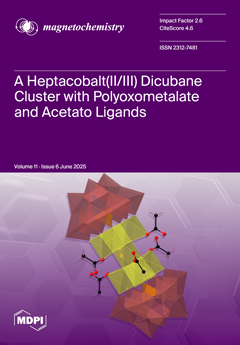Antibiotic resistance has been recognized as a global threat to human health. Therefore, it is urgent to develop effective strategies to address the contamination of water environments caused by antibiotics. In this study, Fe/Mn bimetallic-modified biochar (FMBC) was synthesized through a one-pot oxidation/reduction-hydrothermal
[...] Read more.
Antibiotic resistance has been recognized as a global threat to human health. Therefore, it is urgent to develop effective strategies to address the contamination of water environments caused by antibiotics. In this study, Fe/Mn bimetallic-modified biochar (FMBC) was synthesized through a one-pot oxidation/reduction-hydrothermal co-precipitation method, demonstrating an exceptional photocatalytic-Fenton degradation performance for oxytetracycline (OTC). Characterization techniques including FTIR, SEM, XRD, VSM, and N
2 adsorption–desorption analysis confirmed that the Fe/Mn bimetals were successfully loaded onto the surface of biochar in the form of Fe
3O
4 and MnFe
2O
4 mixed crystals and exhibited favorable paramagnetic properties that facilitate magnetic recovery. A key innovation is the utilization of biochar’s inherent phenol/quinone structures as reactive sites and electron transfer mediators, which synergistically interact with the loaded bimetallic oxides to significantly enhance the generation of highly reactive ·OH radicals, thereby boosting catalytic activity. Even after five recycling cycles, the material exhibited minimal changes in degradation efficiency and bimetallic crystal structure, indicating its notable stability and reusability. The photocatalytic degradation experiment conducted in a Fenton-like reaction system demonstrates that, under the conditions of pH 4.0, a H
2O
2 concentration of 5.16 mmol/L, a catalyst dosage of 0.20 g/L, and an OTC concentration of 100 mg/L, the optimal degradation efficiency of 98.3% can be achieved. Additionally, the pseudo-first-order kinetic rate constant was determined to be 4.88 min
−1. Furthermore, this study elucidated the detailed degradation mechanisms, pathways, and the influence of various ions, providing valuable theoretical insights and technical support for the degradation of antibiotics in real wastewater.
Full article





